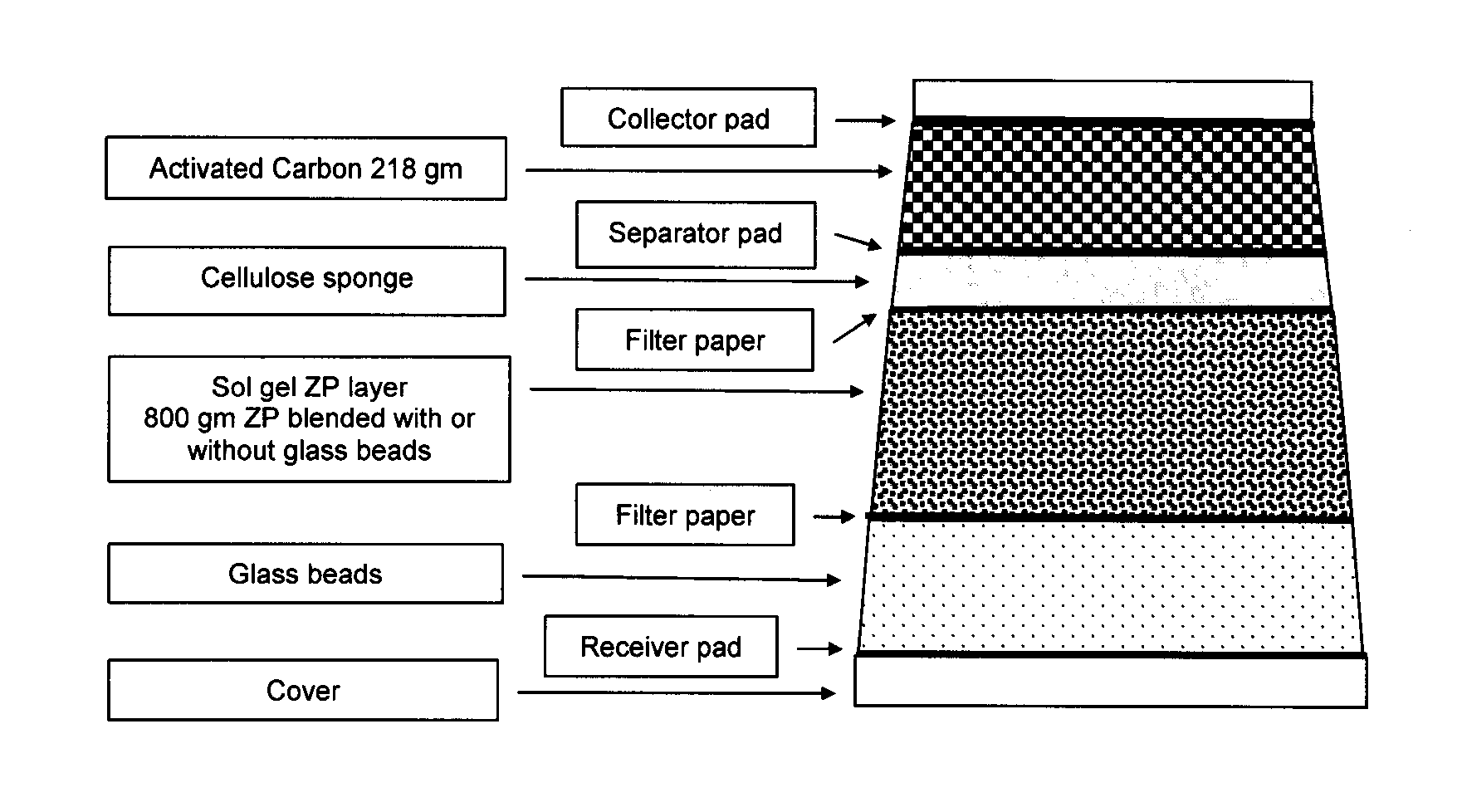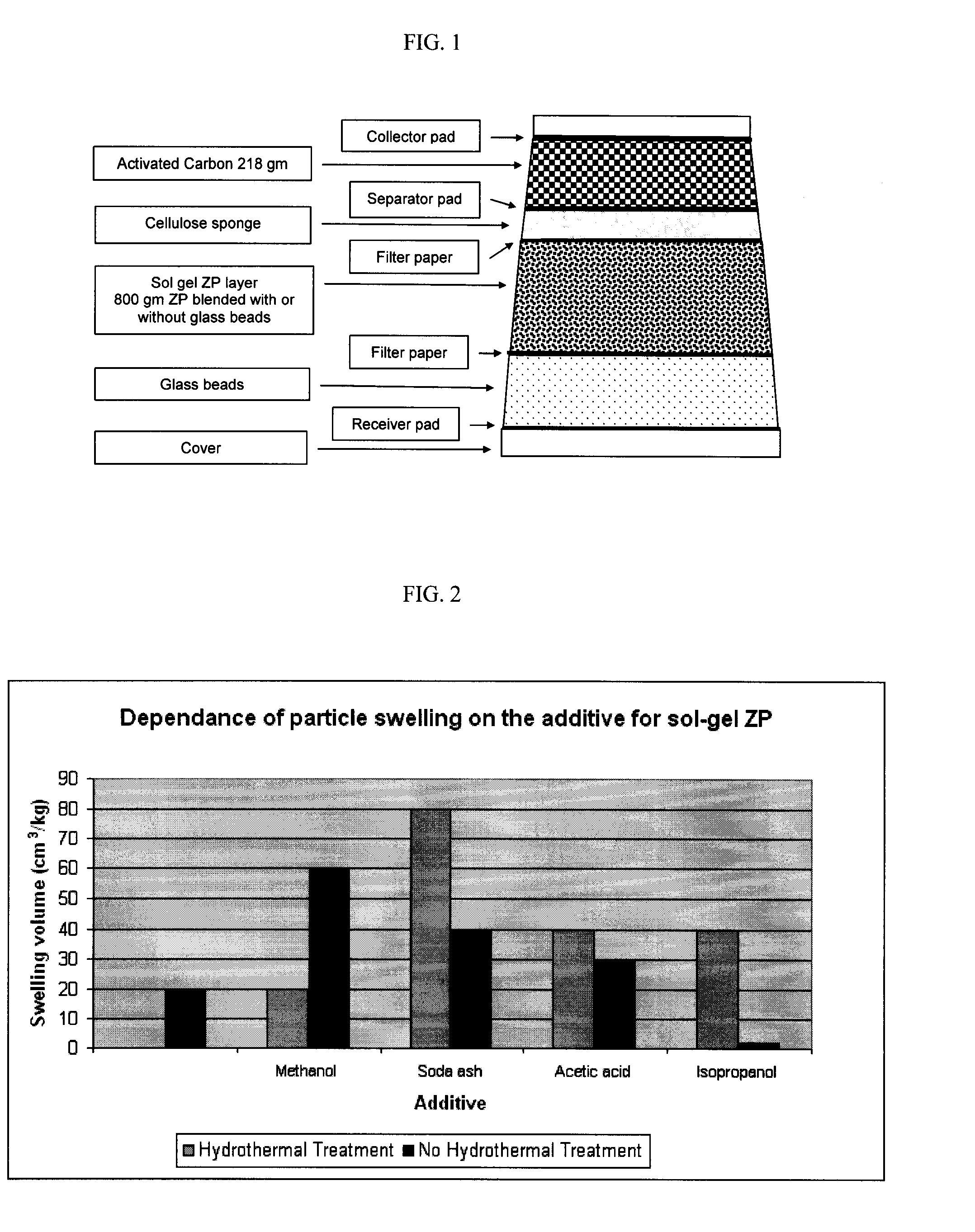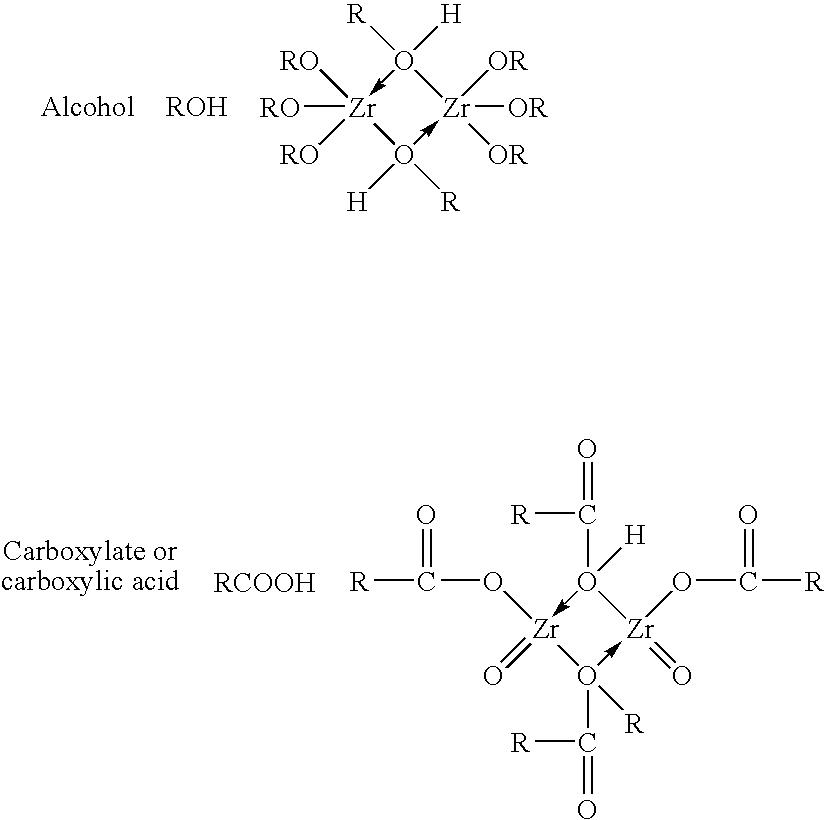Zirconium Phosphate Particles Having Improved Adsorption Capacity and Method Of Synthesizing The Same
a technology of zirconium phosphate and adsorption capacity, which is applied in the field of zirconium phosphate particles, can solve the problems of difficult control, lack of appropriate process control methods, and difficult production of gel precipitation on a manufacturing scal
- Summary
- Abstract
- Description
- Claims
- Application Information
AI Technical Summary
Benefits of technology
Problems solved by technology
Method used
Image
Examples
example 1
Preparation of ZrP Particles by Sol Gel Precipitation
[0070]Solution A was prepared as follows: 20 g ZOC crystals was dissolved in 15 ml deionized water and 15 ml isopropanol was added to the solution. Then, with agitation by magnetic stirrer or plastic impeller, about 100 drops of concentrated HCl was added to the solution with continued agitation until all precipitate was redissolved to form a clear solution.
[0071]Solution B was prepared as follows: 30 g Technical Grade phosphoric acid (76%) was diluted in 60 ml water in a 500 ml beaker. With a magnetic stirrer, the diluted acid was heated to a boiling temperature.
[0072]Reaction process steps:[0073]Step 1: Solution A was pumped into Solution B at boiling temperature at about 10 ml / min flow rate, with moderate agitation speed using magnetic stirrer or plastic impeller.[0074]Step 2: After addition was complete to produce a slurry of precipitate, the slurry was heated for one hour to evaporate off the alcohol completely and improve cr...
example 2
[0077]Example 1 was repeated but the acid zirconium phosphate (AZP) product was titrated to pH 6.0 with 50% NaOH in about 200 ml deionized water and followed by washing before filtration and drying of the filtered product.
example 3
[0078]The mixing process of ZOC / isopropanol and phosphoric acid in Example 1 was performed again at the ambient temperature of the acid. The NH4+—N adsorption capacity of the final product was about the same as the product obtained by high temperature mixing although there was some degree of agglomeration upon drying of the product.
PUM
| Property | Measurement | Unit |
|---|---|---|
| Temperature | aaaaa | aaaaa |
| Temperature | aaaaa | aaaaa |
| Length | aaaaa | aaaaa |
Abstract
Description
Claims
Application Information
 Login to View More
Login to View More - R&D
- Intellectual Property
- Life Sciences
- Materials
- Tech Scout
- Unparalleled Data Quality
- Higher Quality Content
- 60% Fewer Hallucinations
Browse by: Latest US Patents, China's latest patents, Technical Efficacy Thesaurus, Application Domain, Technology Topic, Popular Technical Reports.
© 2025 PatSnap. All rights reserved.Legal|Privacy policy|Modern Slavery Act Transparency Statement|Sitemap|About US| Contact US: help@patsnap.com



